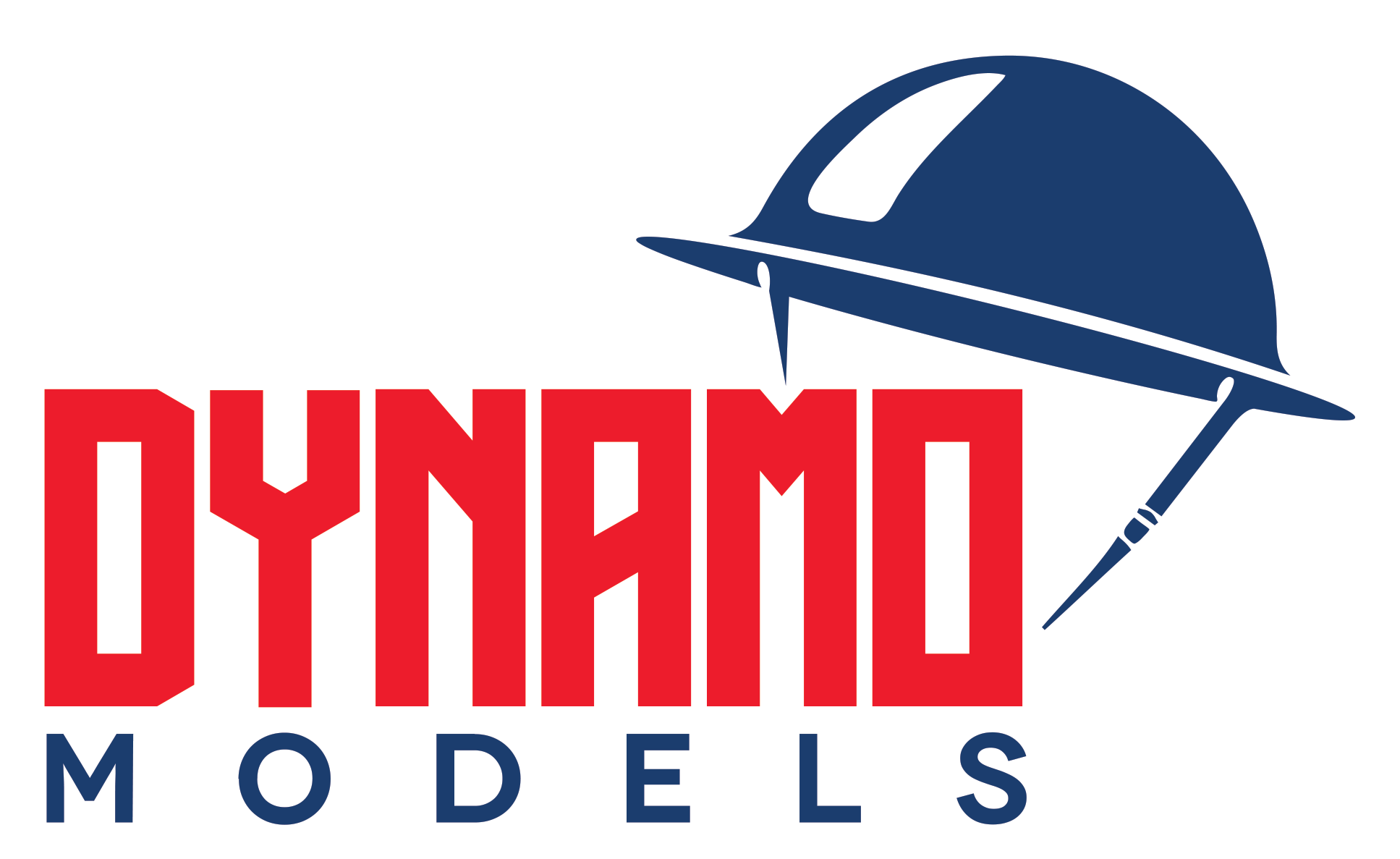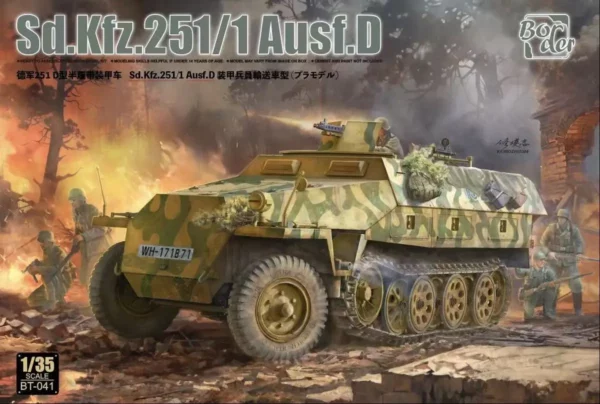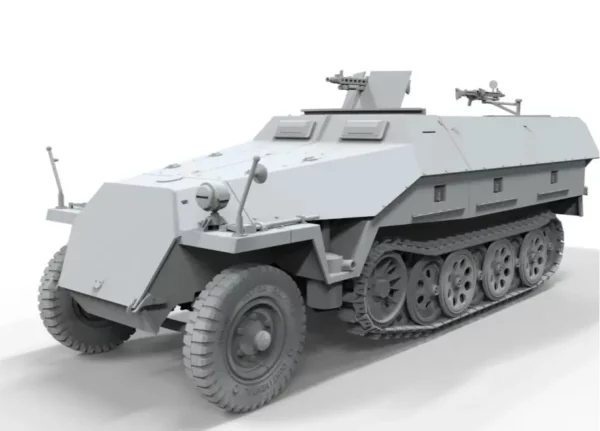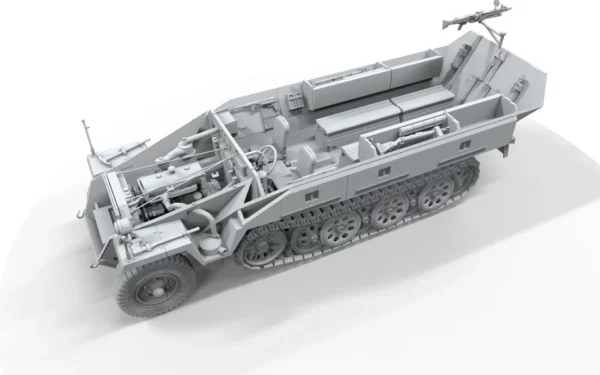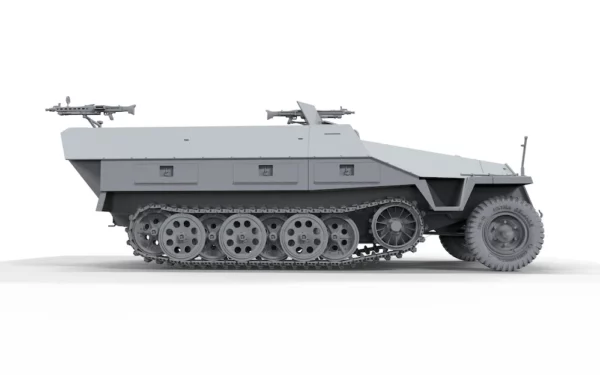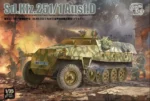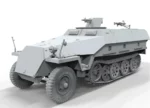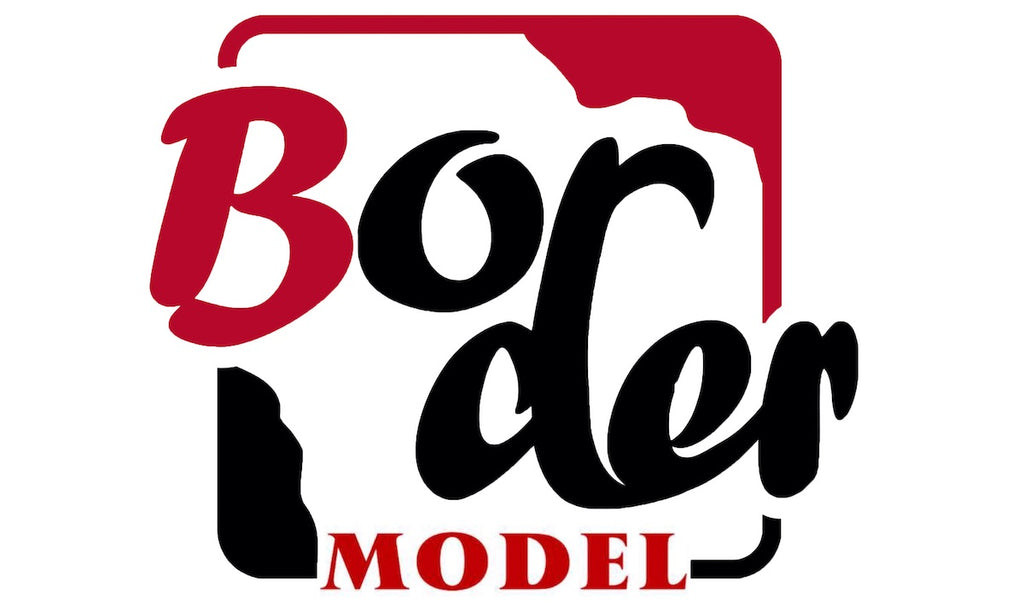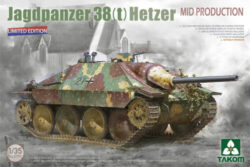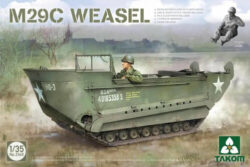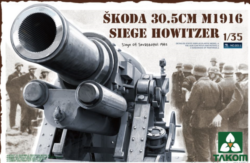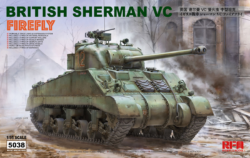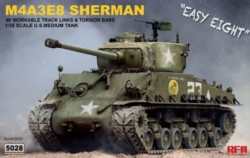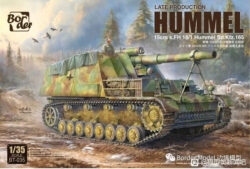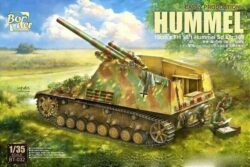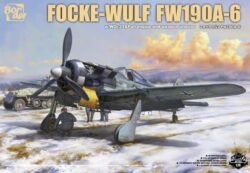Border Model BT041 – Sd.Kfz.251/1 Ausf.D
49,00€
– Plastic model kit to build a Sd.Kfz.251/1 Ausf.D Border model
– Scale plastic kit include photo-etch, clear parts and decals
– Model to be assembled and painted. Glue and paint not supplied.
1 en stock
The Border Model BT-041 is a 1/35 scale model kit of the Sd.Kfz.251/1 Ausf.D, a German half-track vehicle widely used during World War II. This kit is part of Border Model’s lineup, known for its high level of detail and accuracy, making it a popular choice among experienced modelers.
- Complete Interior and Engine: The kit includes a fully detailed interior and engine, allowing for an in-depth and realistic build.
- Workable Tracks: The tracks are designed to be movable, which adds to the realism and flexibility of the model.This kit requires assembly and painting, and it is aimed at modelers who appreciate detailed and intricate builds. No figures are included, so the focus is entirely on the vehicle itself. The kit does not come with paint or glue, so these will need to be purchased separately.The Sd.Kfz. 251/1 Ausf. D was a German half-track armored personnel carrier used during World War II. Introduced in 1943, this variant was designed for troop transport, capable of carrying up to 10 soldiers. It was armed with two MG34 or MG42 machine guns for defense. Powered by a Maybach HL42 engine, it could reach speeds of 53 km/h with a range of 300 km on roads. The Ausf. D featured a simplified design with sloped armor up to 14.5 mm thick, making it easier and quicker to produce. It was widely used by the Wehrmacht for various roles, including infantry support and reconnaissance.This model offers a great opportunity for enthusiasts to recreate a historically significant vehicle with high fidelity and detail.
Sd.Kfz. 251/1 Ausf. D:
The Sd.Kfz. 251/1 Ausf. D was one of Nazi Germany’s primary half-tracks during World War II, designed to transport infantry units and provide them with armored protection on the battlefield. Part of the “Schützenpanzerwagen” family of armored vehicles, it was developed by Hanomag in the late 1930s and underwent various modifications throughout the war. The Ausf. D model, introduced in 1943, was one of the later versions and featured significant improvements in design efficiency and ease of production. Known for its versatility, the Sd.Kfz. 251/1 Ausf. D served as the backbone of mechanized infantry, allowing German forces to mobilize quickly and engage effectively in a variety of combat scenarios.
Design and Modifications
The Sd.Kfz. 251/1 Ausf. D was distinguished by its simplified design compared to earlier models, specifically the Ausf. A through C. The Ausf. D had a more streamlined hull structure, with sloped armor to enhance deflection and reduce production costs. The hull sides were constructed from welded, flat plates instead of the more complex, angled design of previous models, resulting in easier manufacturing and repair. This design change not only reduced labor but also allowed for faster assembly, which was crucial as Germany sought to replace heavy losses later in the war.
The vehicle was powered by a Maybach HL 42 TRKM six-cylinder gasoline engine, producing around 100 horsepower, giving it a maximum speed of 52 km/h on roads and approximately 25 km/h off-road. The half-track design was a compromise between mobility and protection; the tracks at the rear provided better traction on rough terrain, while the wheels in the front maintained speed and maneuverability on smoother surfaces. The Sd.Kfz. 251/1 had a range of approximately 300 kilometers on a full tank, making it ideal for operations behind enemy lines or in support of armored divisions.
Armament and Protection
The Sd.Kfz. 251/1 Ausf. D was typically armed with two MG34 or MG42 machine guns mounted at the front and rear, providing all-around defensive capabilities. The MGs were effective against infantry and light vehicles, enabling the half-track to support advancing infantry with suppressive fire. With its open-top design, the vehicle allowed troops inside to fire their weapons over the sides, further enhancing its combat versatility.
The armor on the Sd.Kfz. 251/1 Ausf. D ranged from 8 mm to 14.5 mm, providing protection against small arms fire and shell fragments. However, it was vulnerable to heavy machine guns, anti-tank rifles, and artillery, making tactical deployment essential. The open-top structure, while beneficial for observation and infantry engagement, left the crew and passengers exposed to shrapnel, grenades, and other airborne threats.
Tactical Use and Operational Role
The Sd.Kfz. 251/1 Ausf. D was primarily used for transporting Panzergrenadiers (mechanized infantry) into battle, allowing them to keep pace with German tanks and quickly dismount for engagement. Its mobility and firepower made it effective in Blitzkrieg tactics, as it could advance rapidly alongside armored units. The half-track’s role in German mechanized warfare was crucial; it provided the infantry with the protection they needed to reach the front lines and disembark quickly for combat.
Beyond troop transport, the Sd.Kfz. 251/1 was adaptable to a range of battlefield roles, including reconnaissance, supply transport, and command and control. Variants of the Ausf. D were modified to carry radio equipment, artillery spotters, and even anti-tank or anti-aircraft weapons, demonstrating its versatility as a multi-role vehicle. The presence of the Sd.Kfz. 251/1 Ausf. D on the battlefield allowed German units to maintain a higher level of coordination and flexibility, especially in mobile engagements where traditional infantry movements would have been slower and more vulnerable.
Legacy and Impact
Although the Sd.Kfz. 251/1 Ausf. D was ultimately limited in its defensive capability due to its light armor, it became an indispensable tool for German mechanized warfare. The simplified Ausf. D model allowed for mass production, which helped meet the high demand for armored personnel carriers as the war intensified. While other nations developed their own APCs, the Sd.Kfz. 251/1 remained one of the most recognizable and widely used vehicles in the German arsenal.
Today, the Sd.Kfz. 251/1 is remembered as an iconic vehicle of World War II, exemplifying the principles of rapid movement, mechanized support, and tactical versatility. Its design influenced post-war APC development, particularly in terms of balancing mobility, protection, and production efficiency. As one of the earliest mechanized troop carriers used in large numbers, the Sd.Kfz. 251/1 Ausf. D helped shape the modern concept of infantry mechanization and remains a key symbol of armored warfare history.
| Poids | 1 kg |
|---|---|
| Brand | |
| Country |
Germany |
| Material |
Plastic |
| Period |
WW2 |
| Scale |
